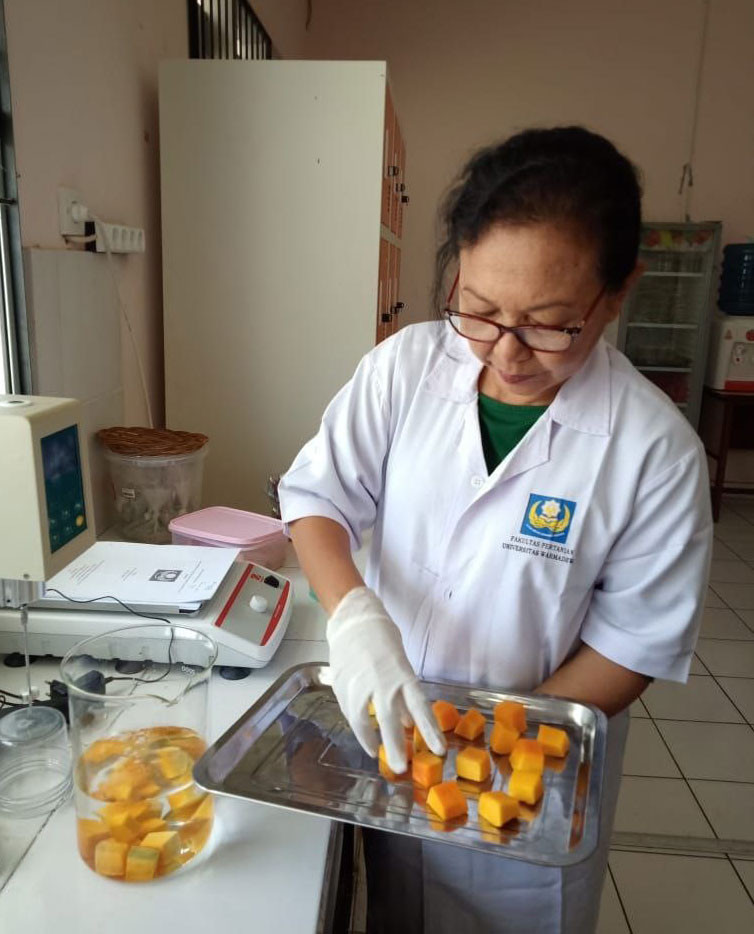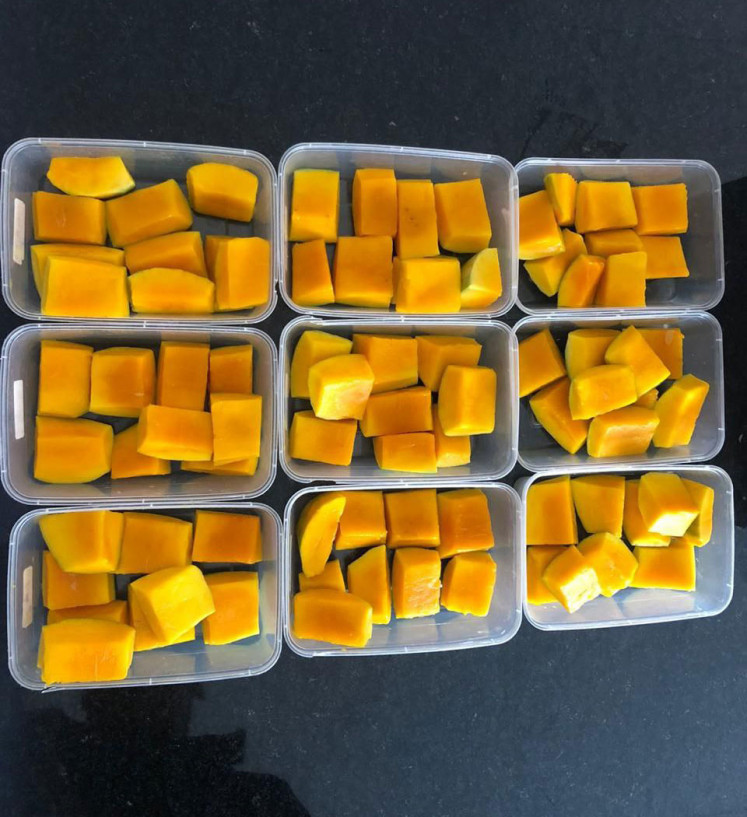Popular Reads
Top Results
Can't find what you're looking for?
View all search resultsPopular Reads
Top Results
Can't find what you're looking for?
View all search resultsMaintaining quality of fresh fruits with edible coating
Consumer awareness of health has spurred an increase in the consumption of tropical fruits. Aside from being delicious, tropical fruits are also antioxidants, anticarcinogenic, anti-inflammatory and antimicrobial, helping with digestion and immunity and overcoming obesity.
Change text size
Gift Premium Articles
to Anyone
C
onsumer awareness of health has spurred an increase in the consumption of tropical fruits. Aside from being delicious, tropical fruits are also antioxidants, anticarcinogenic, anti-inflammatory and antimicrobial, helping with digestion and immunity and overcoming obesity. Tropical fruits contain bioactive components such as phenolic compounds, carotenoids, organic acids, vitamins and fiber, which are beneficial to the human body.
The development of storage technology, transportation and marketing systems has also become a factor in this change. As tropical fruits are perishable commodities, visible damage to the skin and other parts of a fruit's exterior often deters consumers from buying.
This behavior led to an increase in sales of fresh-cut fruit. Their presentation and lack of preparation time make it irresistible to consumers who want safe, clean and nutritious products with minimal process. Sellers also benefit from the reduced product volume and transport cost.
However, this “what you see is what you eat” mindset also leaves fruits with flesh or edible parts still suitable for consumption neglected at the bottom of a crate. This is especially true for fruits with more inedible parts, including mangosteen (63 to 75 percent), mango (22 to 29 percent), and rambutan (52 to 57 percent), making them prime contributors to household waste.
But despite being called minimally processed, there is considerable effort in preparing a box of fresh-cut fruits. Before landing on shelves at the nearest supermarket, they undergo processing stages such as stripping, cutting, slicing, pith removal, washing, packaging, and so on. Physiological changes contribute significantly to the sensitivity of fresh-cut fruits, leading to a decrease in texture or softening and susceptibility to microorganism infection. They result in fresh-cut fruits having a shorter shelf-life than whole fruits.
However, there are ways to maintain the texture of fresh-cut fruit, including temperature control to stall the postharvest deterioration of fruits. Cooling from upstream to downstream significantly minimizes the effects of mechanical injury in fresh-cut fruits while reducing enzyme activity and metabolic rate so that the product shelf life is longer.
In addition to calcium and cold temperatures, edible coatings are also helpful in extending the shelf life of fresh-cut products. An edible coating is a thin layer that is edible, environmentally friendly and biodegradable. Edible coating application methods include dipping, foaming, spraying, casting and controlled dripping. Additives of various types and concentrations also determine the consistency and stability of the edible coating.
It functions as an antimicrobial, carrier of additives and barriers to chemical, physical and biological changes, maintaining its quality and extending its shelf life. In addition, some of the active ingredients in edible coatings can be consumed with food to preserve their nutritional and sensory attributes.
Author: Dr. Ir. Luh Suriati, MSi.
Lecturer in Food Science Technology Department
Faculty of Agriculture Warmadewa University











